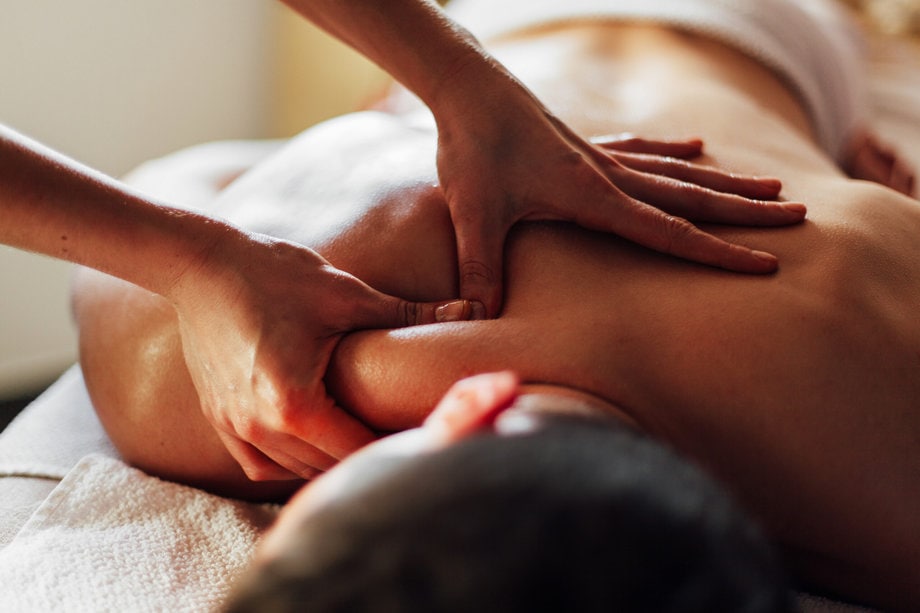Tui Na Massage Vs. Shiatsu: Comparing Therapeutic Bodywork Techniques

Tui Na massage and Shiatsu are two popular forms of therapeutic bodywork techniques that have been practiced for centuries.
Originating from China and Japan respectively, Tui Na massage and Shiatsu share similarities in their underlying principles and techniques, yet also have distinct differences.
This article aims to provide an objective and comprehensive comparison of these two techniques, exploring their origins, principles, techniques, benefits, and applications.
By understanding the unique characteristics of each technique, individuals seeking therapeutic bodywork can make informed decisions about which approach may be most suitable for their needs.
Additionally, this article emphasizes the importance of finding a qualified practitioner to ensure safe and effective treatment.
With the growing interest in alternative and holistic therapies, this comparison of Tui Na massage and Shiatsu will serve as a valuable resource for those seeking to enhance their well-being through the power of touch.
Origins and History of Tui Na Massage and Shiatsu
The origins and historical development of Tui Na massage and Shiatsu can be traced back to ancient China and Japan, respectively. Tui Na massage, also known as Chinese therapeutic massage, has a history of over 2,000 years and is deeply rooted in traditional Chinese medicine. It is believed to have been developed by the ancient Chinese as a way to promote healing and restore balance in the body.
On the other hand, Shiatsu originated in Japan in the early 20th century and was influenced by both traditional Chinese medicine and Western medical practices. It was developed by Tokujiro Namikoshi and later refined by his son, Toru Namikoshi. Shiatsu focuses on applying pressure to specific points on the body to alleviate pain and promote overall well-being.
Both Tui Na massage and Shiatsu have evolved over time and are now practiced worldwide as effective therapeutic bodywork techniques.
Principles and Techniques of Tui Na Massage
One key aspect of Tui Na massage is the application of various techniques that involve the manipulation and mobilization of soft tissues and joints. These techniques aim to restore the balance of Qi, the vital energy, within the body.
The therapist may use rolling, kneading, pressing, and stretching movements to stimulate specific acupressure points along the meridians. Additionally, Tui Na massage incorporates techniques such as traction, friction, and percussion to promote relaxation, relieve pain, and improve overall well-being. The therapist’s hands, fingers, forearms, and elbows are used to apply pressure and manipulate the muscles and joints.
This therapeutic bodywork technique can evoke a sense of relief and relaxation, allowing the recipient to experience a deep release of tension and stress. It also enhances the body’s natural healing abilities, leaving one with a renewed sense of vitality and harmony.
- Benefits of Tui Na massage:
- Promotes relaxation and stress relief
- Improves blood circulation and lymphatic drainage
- Emotional effects of Tui Na massage:
- Elicits a sense of calmness and tranquility
- Enhances a feeling of well-being and balance
Benefits and Applications of Tui Na Massage
Promoting relaxation and stress relief, Tui Na massage has a wide range of benefits and applications in enhancing overall well-being and balance.
Tui Na massage can effectively alleviate musculoskeletal pain and tension by targeting specific acupoints and meridians, promoting blood circulation and energy flow. It can also improve joint mobility and flexibility, reduce inflammation, and enhance the body’s natural healing process.
In addition to its physical benefits, Tui Na massage can also have positive effects on mental health, reducing anxiety and depression symptoms, and promoting a sense of calm and relaxation.
Furthermore, Tui Na massage can be used as a complementary therapy for various health conditions, including chronic pain, digestive disorders, respiratory issues, and sleep disturbances.
Overall, Tui Na massage offers a holistic approach to well-being, promoting both physical and mental health benefits.
Principles and Techniques of Shiatsu
Based on Japanese principles and techniques, Shiatsu involves applying pressure to specific points on the body to stimulate energy flow and promote balance and harmony.
The main principle of Shiatsu is that the body has a system of energy channels, known as meridians, through which vital energy, or Qi, flows.
By applying pressure to these points along the meridians, known as acupressure points, the practitioner aims to restore the balance of Qi and promote the body’s natural healing abilities.
The pressure applied in Shiatsu can vary, from gentle and soothing to deep and invigorating, depending on the needs of the individual.
Techniques commonly used in Shiatsu include kneading, tapping, stretching, and holding.
Through these techniques, Shiatsu aims to alleviate physical and mental stress, promote relaxation, and improve overall well-being.
Benefits and Applications of Shiatsu
The application of Shiatsu has been found to have numerous benefits, including reducing muscle tension, improving circulation, and enhancing the body’s natural healing abilities.
Shiatsu is a therapeutic bodywork technique that involves applying pressure to specific points on the body using fingers, thumbs, palms, and elbows. It is based on the concept of the body’s energy flow, known as Qi, and aims to restore balance and harmony.
The benefits and applications of Shiatsu are as follows:
- Stress reduction: Shiatsu helps to alleviate stress and promote relaxation by releasing tension in the muscles and calming the mind.
- Pain relief: This technique can effectively relieve pain caused by conditions such as headaches, backaches, and joint problems.
- Improved digestion: Shiatsu stimulates the digestive system, aiding in better digestion and relieving symptoms of indigestion or constipation.
- Enhanced well-being: Regular Shiatsu sessions can boost overall well-being by increasing energy levels, promoting better sleep, and reducing anxiety and depression.
Shiatsu offers a range of benefits and applications that contribute to overall physical and mental health.
Key Differences Between Tui Na Massage and Shiatsu
Shiatsu, a traditional Japanese bodywork technique, has gained popularity for its numerous benefits and applications. However, it is essential to acknowledge the distinct differences between Shiatsu and Tui Na massage.
Tui Na massage, originating from China, focuses on manipulating the body’s energy flow through various techniques such as pressing, kneading, and stretching. In contrast, Shiatsu primarily utilizes finger pressure along the body’s meridians to stimulate and balance the body’s energy.
While both therapies aim to promote wellness and alleviate physical discomfort, Tui Na massage tends to be more vigorous and intense, targeting specific areas of tension. Shiatsu, on the other hand, adopts a gentle yet firm approach, promoting relaxation and overall well-being.
Understanding these key differences allows individuals to choose the most suitable technique based on their therapeutic needs and preferences.
Which Technique is Right for You?
When considering different therapeutic bodywork techniques, it is important to carefully evaluate which technique aligns best with your individual needs and goals.
Both Tui Na massage and Shiatsu offer unique benefits and approaches to healing, but deciding which technique is right for you depends on several factors.
Tui Na massage, with its focus on manipulating the body’s soft tissues and using rhythmic movements, can be beneficial for individuals seeking relief from musculoskeletal pain and tension.
On the other hand, Shiatsu, with its emphasis on pressure points and stretching, may be more suitable for those looking to balance their energy and promote overall relaxation.
It is advisable to consult with a trained practitioner who can assess your specific condition and recommend the most appropriate technique for your needs.
Finding a Qualified Practitioner
Finding a qualified practitioner who specializes in therapeutic bodywork techniques is crucial for receiving effective and safe treatment tailored to your specific needs and goals. When searching for a practitioner, there are several factors to consider. First, ensure that the practitioner is properly trained and certified in the specific technique you are interested in, whether it is Tui Na massage or Shiatsu. Look for practitioners who have completed reputable training programs and have obtained relevant certifications. Additionally, it is important to consider the practitioner’s experience and expertise in the field. Look for practitioners who have a proven track record and positive reviews from previous clients. Lastly, consider the practitioner’s approach and philosophy towards bodywork. Some practitioners may have a more holistic approach, while others may focus on specific issues or conditions. It is important to find a practitioner whose approach aligns with your own beliefs and preferences. By taking these factors into consideration, you can find a qualified practitioner who can provide you with effective and safe therapeutic bodywork treatment.
| Factors to Consider | Questions to Ask | |||
|---|---|---|---|---|
| Training and Certification | What training program did you complete? Are you certified? | |||
| Experience and Expertise | How many years have you been practicing? Do you have experience with my specific condition? | |||
| Approach and Philosophy | What is your approach to bodywork? Do you have a specific philosophy or focus? | Approach and Philosophy | My approach to bodywork is holistic and client-centered. I believe in addressing the underlying causes of discomfort or imbalances rather than just treating the symptoms. I focus on creating a safe and supportive environment for my clients, tailoring each session to their individual needs and goals. |
| Training and Certification | I have completed a comprehensive training program in (mention the specific program) and I am certified in (mention the certification). |
| Experience and Expertise | I have been practicing bodywork for (number of years) and have gained valuable experience working with a diverse range of clients. While I may not have specific experience with your condition, I am skilled in assessing and addressing various musculoskeletal issues and can adapt my techniques accordingly.
Frequently Asked Questions
Are there any potential risks or side effects associated with Tui Na Massage or Shiatsu?
Potential risks or side effects associated with tui na massage or shiatsu include bruising, soreness, muscle strain, and temporary discomfort. However, serious adverse effects are rare when these techniques are performed by trained and qualified practitioners.
Can Tui Na Massage or Shiatsu help with specific health conditions or ailments?
Tui Na massage and Shiatsu have been found to provide relief for various health conditions and ailments. Both techniques have shown effectiveness in reducing pain, improving sleep quality, and alleviating symptoms of anxiety and depression.
Are there any age restrictions or limitations for receiving Tui Na Massage or Shiatsu?
There are no specific age restrictions or limitations for receiving tui na massage or shiatsu. Both techniques can be safely applied to people of all ages, although adjustments may be made for infants and elderly individuals.
How long does a typical Tui Na Massage or Shiatsu session last?
A typical session of Tui Na massage or Shiatsu lasts for about 60 minutes. This duration allows for the therapist to properly assess and address the client’s needs, providing a comprehensive and effective treatment.
Is it necessary to remove clothing during a Tui Na Massage or Shiatsu session?
During a tui na massage or shiatsu session, it is generally necessary to remove clothing in order for the therapist to have direct contact with the body and apply the appropriate techniques effectively.






